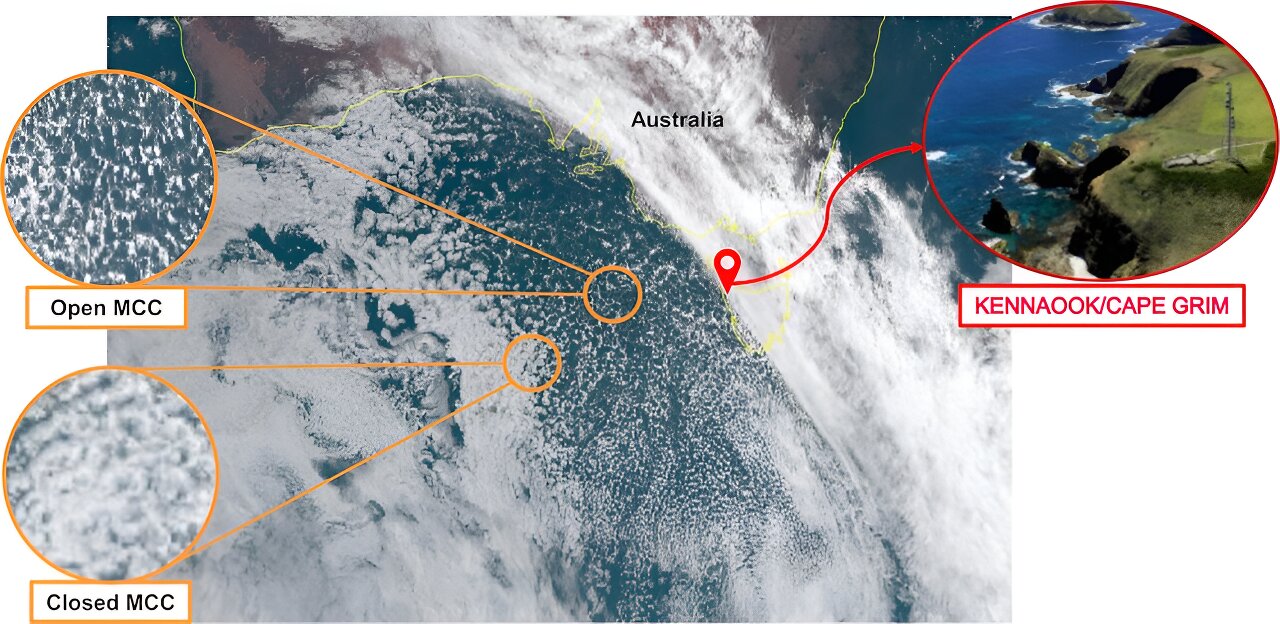There are fewer particles of solid and liquid aerosols in the air over the Southern Ocean. A new study allows us to take a fresh look at the cause of this phenomenon. It seems that the atmosphere is being cleansed by rains coming from a special type of clouds.

The Southern Ocean and its air
Scientists have published a study in the journal Climate and Atmospheric on how the atmosphere functions over the Southern Ocean. This term usually refers to the water area between Antarctica and the extreme parts of South America, Africa and Australia. It is the local air that is considered the cleanest on Earth.
First of all, we are talking about the content of aerosols in it. This is the name of tiny solid particles or liquid droplets, the size of which contributes to the fact that they can be transported in the air for years and months, constantly entering its composition.
The traditional view of the reasons for this situation is that the Southern Ocean is as far away from major cities and transport arteries as possible, so human influence on it is minimal. The main source of aerosols there are splashes from waves and phytoplankton.
However, there is another way of looking at the causes of this phenomenon. There is also extremely dense cloud cover over the Southern Ocean. There are especially a lot of heavy short-term rains here. Therefore, there is an idea that they wash away a significant part of the aerosols and ensure the purity of the air.
Honeycomb-like clouds
It was the cloud cover and its effect on rains and aerosol content that scientists investigated. They relied on a new generation of satellites, which not only allowed them to see individual formations in the atmosphere, but also to assess their structure.
First of all, the researchers were interested in the so-called honeycomb clouds, which form a complex pattern similar to a honeycomb. From such clouds over the Southern Ocean, heavy short-term rains most often occur.
Fortunately, the size of one cell is 40-60 km, which allows it to be properly viewed even by satellites in sufficiently high orbits. To analyze their images, scientists have developed special software.
What did the research show?
The conclusions obtained by scientists are both expected and unusual. On the one hand, satellite data fully confirm the theory of the relationship between honeycomb clouds, short-term rains and aerosol content in the air. Precipitation really washes them into the ocean.
On the other hand, the data show that powerful short-term rains mainly do not occur from “closed” cells, where the thickness of clouds is greater, as one might expect. Instead, precipitation is almost five times more likely to occur from areas that look relatively free of cover.
Scientists still don’t really understand why this is so, but they have already established that honeycomb clouds are mainly observed over the Southern Ocean in winter. That is, during this period, the air above it becomes cleaner.
At the same time, it is interesting that the same clouds are observed from time to time over the northern regions of the Atlantic and Pacific Oceans. Therefore, it is quite possible that similar processes are going on there. However, only future research will be able to establish this.
According to phys.org
Follow us on Twitter to get the most interesting space news in time
https://twitter.com/ust_magazine


